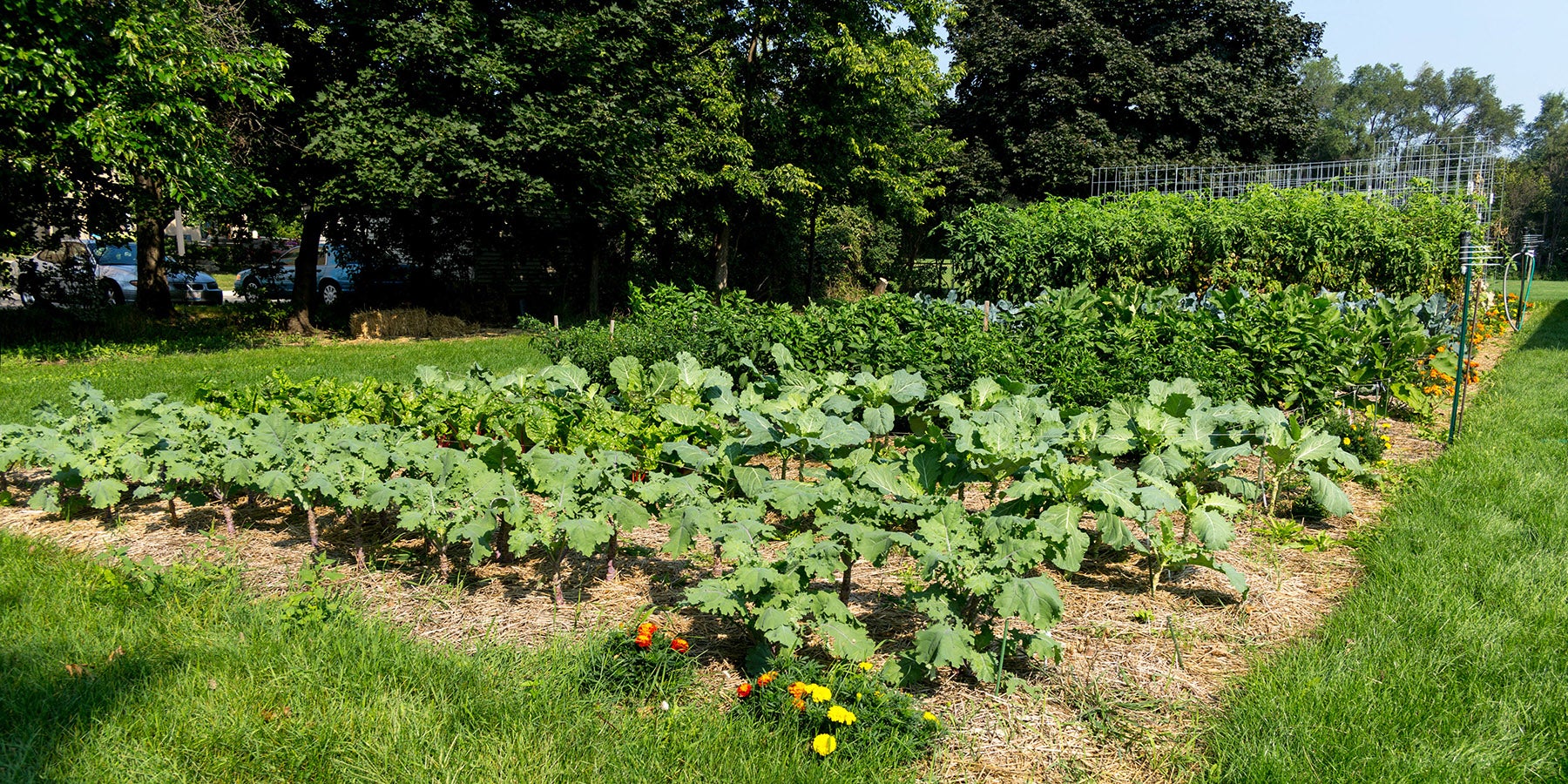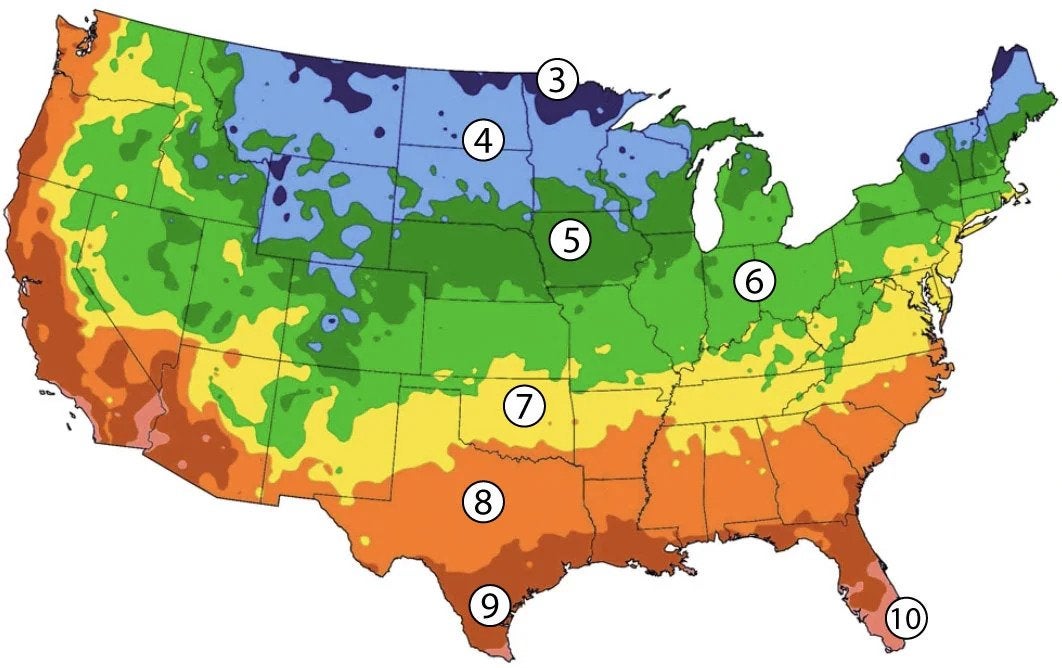5 Vegetable Garden Planning and Planting Tips for Spring

Growing a vegetable garden can be a rewarding experience. Not only does it provide you with fresh and delicious produce, but gardening also allows you to connect with nature in a way that is both enjoyable and educational. Whether you’re looking to start your own vegetable garden this spring, or you're an experienced green thumb, here are some important tips to keep in mind. From prepping for the planting season in your region of the country, to planning out your garden plantings, plus suggestions for soil and crops, we'll share our advice for successful Spring gardening.
1. Know your zone
Spring planting weather may arrive sooner or later depending on where you live. Residents of the southern US can enjoy warmer temperatures earlier, while those at northern latitudes will need to delay their outdoor planting.
The Plant Hardiness Zone Map published by the United States Department of Agriculture (USDA) is an excellent resource for gardeners and growers to determine which plants will likely thrive where they live and when is best to plant them. The map is based on the average annual minimum winter temperature, divided into 10oF zones.

The best time to plant your vegetables varies depending on where you live. Since the timing of the last frost indicates the coming of Spring, knowing what zone you’re in will determine the best time to plant your vegetable garden. Most of the continental United States is covered in zones 3 thru 9. Many states also span a few hardiness zones which can affect your planting schedule. See your Plant Hardiness Zone below for approximate dates of the first and last frosts to ensure your garden is planted and harvested on schedule. Keep in mind, frost dates can vary by a week or two.
Zone 3
- Last Frost Date: May 15
- First Frost Date: September 15
- Annual Minimum Temperature: -30oF
- Crops to plant early: Peppers, Tomatoes
Zone 4
- Last Frost Date: June 1
- First Frost Date: October 1
- Annual Minimum Temperature: -30oF
- Crops to plant early: Broccoli, Brussel Sprouts
Zone 5
- Last Frost Date: May 15
- First Frost Date: October 15
- Annual Minimum Temperature: -15oF
- Crops to plant early: Broccoli, Brussel Sprouts, Carrots
Zone 6
- Last Frost Date: May 1
- First Frost Date: November 1
- Annual Minimum Temperature: -5oF
- Crops to plant early: Broccoli, Cauliflower, Spinach
Zone 7
- Last Frost Date: April 15
- First Frost Date: November 15
- Annual Minimum Temperature: 5oF
- Crops to plant early: Broccoli, Cauliflower, Peas
Zone 8
- Last Frost Date: April 1
- First Frost Date: December 1
- Annual Minimum Temperature: 15oF
- Crops to plant early: Broccoli, Cauliflower
Zone 9
- Last Frost Date: March 1
- First Frost Date: December 15
- Annual Minimum Temperature: 25oF
- Crops to plant early: Peas, Peppers, Tomatoes
2. Map out your garden
A little planning goes a long way toward the success of your eventual harvest. When you start planting your garden, it’s essential to know the growing requirements for everything so that you can plant them in the best spot for each plant to thrive. Make a sketch of your garden plot, indicating sunny and shady areas, spots that retain water, or sections of different soil conditions. Then map out where to plant your crops for the best results.
For example, a crop of tomatoes requires at least six hours per day of direct sunlight and will benefit from nearby companion plants like basil or marigolds. On the other hand, carrots prefer cooler temperatures, so it would be best to put them in a spot with partial shade.
Practicing crop layering can help maximize limited space in a small garden patch by, for example, planting carrots beneath the shade of taller tomato plants.
3. Automate your garden watering
An automatic irrigation system is a great way to conserve water and save money while giving your vegetable garden the attention it needs. An automated system can be set up to water plants at regular intervals with little effort from you.
Consider drip irrigation for a garden with rows of vegetables or a few individual plantings. Drip is easy to install and conserves water by delivering a consistent, small amount of water directly to the specific plants that need it. With a variety of hoses and emitters connected to a Rain Bird Hose End Timer, you can efficiently automate your garden irrigation system while catering to each varietal’s needs.
PICTURE
4. Test your soil
Soil is made up of minerals, organic matter (living and dead), air and water, and provides all the nutrients your plants need. The acidity or alkalinity of the soil, measured by its pH level, determines its health. On the soil pH scale of 1 to 14, a neutral reading is 7.0 - anything below it would be acidic and any number above that is alkaline. Most plants thrive in a near neutral pH range between 6.2 and 7.2 for robust growth.
Testing your soil will determine the pH balance of your ground. The results will tell you which elements are absent from your earth and how much needs to be added back to your garden for perfect growth. Other factors include soil texture and water retention, which are also important to consider for your garden design.
A soil test can quickly reveal if your land is acidic, alkaline or (ideally) neutral. Many communities can test your soil sample for pH and nutrient levels, sometimes for a small fee, or you can purchase a soil test kit at your local garden center.
You may need to adjust soil nutrient levels depending on the results from your soil test. Fertilizers or other organic material can be added to give your plants the nutrition they need to get started for the season. You can also work in organic compost and manure to improve your soil fertility and boost the number of beneficial microorganisms that help make nutrients available to plants.
5. Rotate Crops
Crop rotation is the process of planting different crops in the same area each year. This practice prevents soil depletion, reduces pest and disease problems, and helps maintain soil fertility. Plants such as tomatoes, peppers, cucumbers and squash typically take up more nutrients from the soil than other vegetables. Planting these together in the same spot every season can deplete the soil of essential nutrients. To avoid this, rotate the areas where these heavy feeders are planted each season.
Other vegetables replace the nutrients that are depleted by those that take more. For example, root vegetables like carrots, beets and turnips are often planted in the same spot where tomatoes were grown the previous season because they add back to the soil’s fertility.
From mapping out where to plant each crop, to prepping your soil for proper nutrition, these tips will help ensure that your vegetable garden is ready for planting. With a little bit of preparation this spring, you can have a bountiful harvest.
